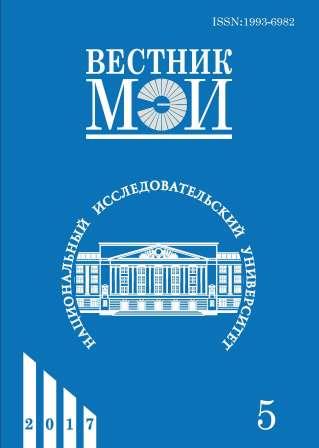Application of the Response Spectrum Method for the Differentiated Seismic Ground Motion Model
Abstract
The response spectrum method (RSM) is the most widely used engineering technique for solving problems of seismic stability theory. However, it is often believed that the RSM can only be applied to an integrated seismic motion, i.e., when the soil foundation under the structure makes a spatial motion as a rigid body. The aim of the article to show the possibility of applying the RSM in case of a differentiated seismic ground motion, during which each support point of the structure makes individual translational and angular spatial movements. As is well known, the RSM is a quasistatic modal method, in which the transport inertial seismic forces are specified in the form of static loads dependent on ground accelerations. Therefore, to use the RSM for a differentiated seismic motion, it is necessary to solve two key problems: (i) the transport motion shall be specified in a correct way, and (ii) the spatial seismic ground motion intensity (spectral accelerations) shall be defined. The first problem is solved by introducing an influence matrix, which correlates the displacements of the support points with the displacements of the model. The second problem is solved by setting up a matrix of spatial variations of intensity, which defines the vector of accelerations at any support point. As a result, we obtain the equations of relative differentiated motion, which are similar in form to the equations for the integrated seismic ground motion involving the transport seismic forces on the right-hand side. The RSM theory for the case of differentiated ground motion is briefly outlined, and an analytical solution for a spatial model (a concrete slab with a displaced center of gravity resting on four columns and subjected to a two-component seismic load) is given for the case of differentiated ground motion.
References
2. Ньюмарк Н., Розенблюэт Э. Основы сейсмостойкого строительства. М.: Стройиздат, 1980.
3. Назаров Ю.П., Позняк Е.В., Филимонов А.В. Анализ вида волновой модели и получение расчетных параметров сейсмического воздействия для высотного здания // Промышленное и гражданское строительство. 2014. № 5. С. 40—45.
4. Назаров Ю.П., Позняк Е.В. Оценка ротационных компонент сейсмического движения грунта // Основания, фундаменты и механика грунтов. 2015. № 6. С. 22—26.
5. Nazarov Yu.P., Poznyak E.V., Filimonov A.V. A Brief Theory and Computing of Seismic Ground Rotations for Structural Analyses // Soil Dynamics and Earthquake Engineering. 2015. V. 71. Pp. 31—41.
6. Назаров Ю.П. Расчетные параметры волновых полей сейсмических движений грунта. М.: Наука, 2015.
7. Позняк Е.В. О связи уравнений относительного и абсолютного движения при дифференцированном сейсмическом воздействии // Вестник МЭИ. 2017. № 1. С. 31—37.
8. Назаров Ю.П, Позняк Е.В. О пространственной изменчивости сейсмических движений грунта при расчете сооружений // Основания, фундаменты и механика грунтов. 2014. № 5. С. 17—20.
9. Позняк Е.В. Основы теории сейсмостойкости строительных конструкций. М.: Изд-во МЭИ, 2016.
10. Назаров Ю.П., Позняк Е.В. Определение коэффициента динамичности в расчетах на сейсмостойкость [Электрон. ресурс] http://www.nso-journal.ru (дата обращения 25.07.2017)
---
Для цитирования: Позняк Е.В., Новикова О.В. Линейно-спектральный метод для дифференцированной модели сейсмического движения грунта // Вестник МЭИ. 2017. № 5. С. 48—56. DOI: 10.24160/1993-6982-2017-5-48-56.
#
1. Nazarov Yu.P. Analiticheskie Osnovy Rascheta Sooruzheniy na Seysmicheskie Vozdeystviya. M.: Nauka, 2010. (in Russian).
2. N'yumark N., Rozenblyuet E. Osnovy Seysmostoykogo Stroitel'stva. M.: Stroyizdat, 1980. (in Russian).
3. Nazarov Yu.P., Poznyak E.V., Filimonov A.V. Analiz Vida Volnovoy Modeli i Poluchenie Raschetnyh Parametrov Seysmicheskogo Vozdeystviya dlya Vysotnogo Zdaniya. Promyshlennoe i Grazhdanskoe Stroitel'stvo. 2014;5:40—45. (in Russian).
4. Nazarov Yu.P., Poznyak E.V. Otsenka Rotatsionnyh Komponent Seysmicheskogo Dvizheniya Grunta. Osnovaniya, Fundamenty i Mekhanika Gruntov. 2015;6:22—26. (in Russian).
5. Nazarov Yu.P., Poznyak E.V., Filimonov A.V. A Brief Theory and Computing of Seismic Ground Rotations for Structural Analyses. Soil Dynamics and Earthquake Engineering. 2015;71:31—41.
6. Nazarov Yu.P. Raschetnye Parametry Volnovyh Poley Seysmicheskih Dvizheniy Grunta. M.: Nauka, 2015. (in Russian).
7. Poznyak E.V. O Svyazi Uravneniy Otnositel'nogo i Absolyutnogo Dvizheniya pri Differentsirovannom Seysmicheskom Vozdeystvii. Vestnik MPEI. 2017;1:31—37. (in Russian).
8. Nazarov Yu.P, Poznyak E.V. O Prostranstvennoy Izmenchivosti Seysmicheskih Dvizheniy Grunta pri Raschete Sooruzheniy. Osnovaniya, Fundamenty i Mekhanika Gruntov. 2014;5:17—20. (in Russian).
9. Poznyak E.V. Osnovy Teorii Seysmostoykosti Stroitel'nyh Konstruktsiy. M.: Izd-vo MPEI, 2016. (in Russian).
10. Nazarov Yu.P., Poznyak E.V. Opredelenie Koeffitsienta Dinamichnosti v Raschetah na Seysmostoykost' [Elektron. resurs] http://www.nsojournal. ru (Data Obrashcheniya 25.07.2017) (in Russian).
---
For citation: Poznyak E.V., Novikova O.V. Application of the Response Spectrum Method for the Differentiated Seismic Ground Motion Model. MPEI Vestnik. 2017; 5:48—56. (in Russian). DOI: 10.24160/1993-6982-2017-5-48-56.




